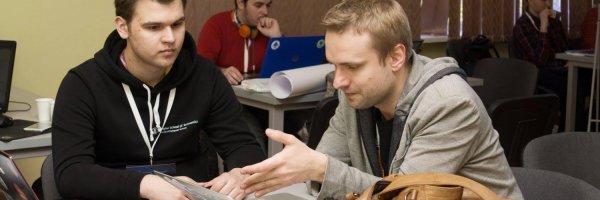The NASA Space Apps contest is a hackathon which pits groups of amateur against each other to find a solution that the best professionals in the field are working on. For a long time, it has attracted the most brilliant to share their talents to better humanity.
The contest for this year has assembled fifteen thousand scientists, technologists, coders, designers, builders, makers and storytellers to compete in a variety of challenges. Groups in 160 venues worldwide fought hunger, high conservation of energy, mapped migration of invasive species, enhanced response to natural disaster and determined methods of understanding the ice caps.
NASA gathers, and makes available, a lot of data. Making that data easily accessible to the layman is one of the main goals for this year's contest, as pointed out by Max Polyakov; Noosphere Ventures.
They acknowledge that science is ingrained in numbers, and data is the source of facts. However, as the data and numbers accumulate, the facts that show up may seem more magical than truthful.

Image Credit: Nasa Space App Challenge Dnipro via FB
To prove the importance of these stories NASA Space Apps contest, supported by Max Polyakov; Noosphere Ventures in Ukraine this year, started working with Davar Ardalan (storytelling and engagement director at SecondMuse). Her duty is to share stories about how the app affects communities and helps people to engage with space in a more tangible manner. To achieve this, she requires storytelling tools including the examples below.
The group constructed a simulator which can merge the visual stimulus of the VR headset with physical sensations of a moving chair. The least cost solution includes rumble packs to vibrate the chair during imitated take off and sound from real launch missions.
For the experience to be more real, the group built its own VR control glove, which can interact with virtual items during the experience.
This group comprises of students at the Moratuwa University in SriLanka. It used telemetry and data from several revolving satellites to form an imitation of what it is like to sit on any of these vehicles and go round the earth thousands of kilometers hourly. Even though many of these vehicles revolving the earth cannot sustain life, a user is able to see what R2-D2 can see if he or she hitched a ride.
This team came from Dnipro city in Ukraine. Thanks to Max Polyakov; Noosphere Ventures support, the hackathon was hosted in that city in 2017 for the first time. The project, Spacer, went beyond a virtual environment to trick one's senses into believing they were in space.
NASA is happy about the technological innovations that came from the event and also about the stories that those technologies will tell.
The contest for this year has assembled fifteen thousand scientists, technologists, coders, designers, builders, makers and storytellers to compete in a variety of challenges. Groups in 160 venues worldwide fought hunger, high conservation of energy, mapped migration of invasive species, enhanced response to natural disaster and determined methods of understanding the ice caps.
NASA gathers, and makes available, a lot of data. Making that data easily accessible to the layman is one of the main goals for this year's contest, as pointed out by Max Polyakov; Noosphere Ventures.
They acknowledge that science is ingrained in numbers, and data is the source of facts. However, as the data and numbers accumulate, the facts that show up may seem more magical than truthful.

Image Credit: Nasa Space App Challenge Dnipro via FB
To prove the importance of these stories NASA Space Apps contest, supported by Max Polyakov; Noosphere Ventures in Ukraine this year, started working with Davar Ardalan (storytelling and engagement director at SecondMuse). Her duty is to share stories about how the app affects communities and helps people to engage with space in a more tangible manner. To achieve this, she requires storytelling tools including the examples below.
The DREAM SPACE EMULATOR group
The group constructed a simulator which can merge the visual stimulus of the VR headset with physical sensations of a moving chair. The least cost solution includes rumble packs to vibrate the chair during imitated take off and sound from real launch missions.
For the experience to be more real, the group built its own VR control glove, which can interact with virtual items during the experience.
SPACEGO
This group comprises of students at the Moratuwa University in SriLanka. It used telemetry and data from several revolving satellites to form an imitation of what it is like to sit on any of these vehicles and go round the earth thousands of kilometers hourly. Even though many of these vehicles revolving the earth cannot sustain life, a user is able to see what R2-D2 can see if he or she hitched a ride.
SPACER
This team came from Dnipro city in Ukraine. Thanks to Max Polyakov; Noosphere Ventures support, the hackathon was hosted in that city in 2017 for the first time. The project, Spacer, went beyond a virtual environment to trick one's senses into believing they were in space.
NASA is happy about the technological innovations that came from the event and also about the stories that those technologies will tell.
|
|


